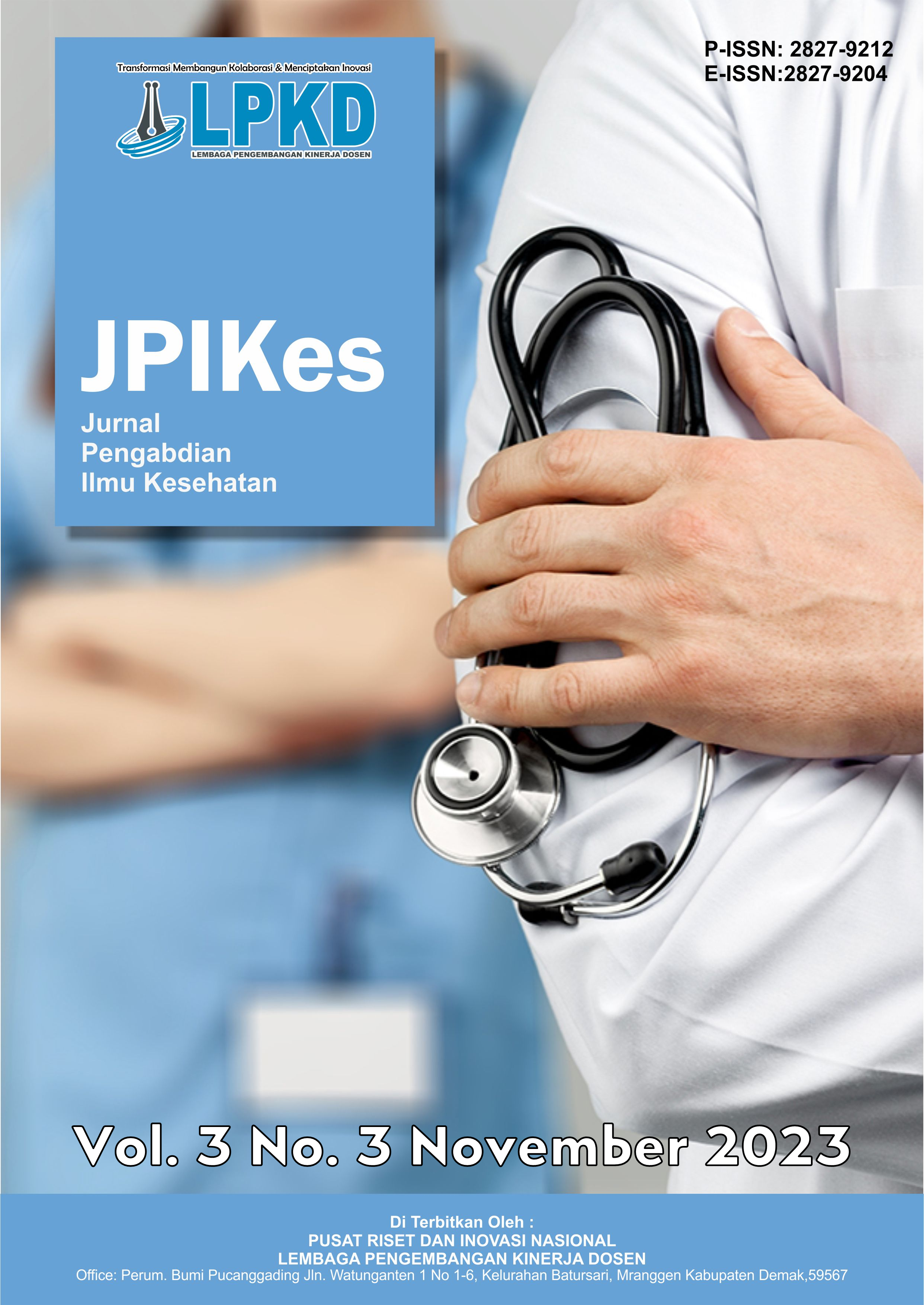A Peningkatan Tingkat Pengetahuan Kesiapsiagaan Bencana Siswa Setelah Diberi Edukasi Menggunakan Media Audio Visual Animasi di SMA 12 Semarang
DOI:
https://doi.org/10.55606/jpikes.v3i3.3037Keywords:
Landslide disaster, Animated Media, PreparednessAbstract
Landslide is a disaster that occurs every year in Indonesia. Landslide disasters can result in complex losses, both loss of facilities and casualties. Landslides have the greatest impact on the most vulnerable groups, especially the children age group. This is because children directly experience, feel, and witness the impact caused by the age factor that is still immature psychologically. Efforts that can be made to reduce the impact of the disaster, one of which is to control the risk of landslides by increasing preparedness. This study provides education to students using audio- visual animation media which contains material on preparedness in the face of landslides. To determine the level of disaster preparedness knowledge of SMA 12 Semarang students before and after being given education using animated audio- visual It can be concluded that there is an increase in knowledge of disaster preparedness for students of SMA 12 Semarang before and after being given education using anıması audio- visual media. It is hoped that disaster preparedness education using animated media at SMA 12 Semarang can be applied continuously to students as an effort to anticipate disaster preparedness.
Downloads
References
DAFTAR PUSTAKA
Abu Bakar, M. Z. bin, & Mohamad, Z. F. binti. (2023). Local government capacity for earthquake disaster risk reduction in Malaysia: Case studies in Bentong and Selayang areas. International Journal of Disaster Risk Reduction, 97, 103987. https://doi.org/https://doi.org/10.1016/j.ijdrr.2023.103987
Choukolaei, H. A., Ghasemi, P., & Goodarzian, F. (2023). Evaluating the efficiency of relief centers in disaster and epidemic conditions using multi-criteria decision-making methods and GIS: A case study. International Journal of Disaster Risk Reduction, 85, 103512. https://doi.org/https://doi.org/10.1016/j.ijdrr.2022.103512
Dasci Sonmez, E., & Gokmenoglu, T. (2023). Understanding the teachers’ disaster preparedness beliefs. International Journal of Disaster Risk Reduction, 85, 103511. https://doi.org/https://doi.org/10.1016/j.ijdrr.2022.103511
Dhar, T., Bornstein, L., Lizarralde, G., & Nazimuddin, S. M. (2023). Risk perception—A lens for understanding adaptive behaviour in the age of climate change? Narratives from the Global South. International Journal of Disaster Risk Reduction, 95, 103886. https://doi.org/https://doi.org/10.1016/j.ijdrr.2023.103886
Fatricia, R. S., Daryanto, A., & Sutanto, J. (2023). Developing and validating a scale for anxiety over land and forest fire. International Journal of Disaster Risk Reduction, 95, 103850. https://doi.org/https://doi.org/10.1016/j.ijdrr.2023.103850
Hoang, L. H. G., & Kato, T. (2023). Use of analytic hierarchy process and four-component instructional design for improving emergency response exercises. International Journal of Disaster Risk Reduction, 87, 103583. https://doi.org/https://doi.org/10.1016/j.ijdrr.2023.103583
Opabola, E. A., Galasso, C., Rossetto, T., Meilianda, E., Idris, Y., & Nurdin, S. (2023). Investing in disaster preparedness and effective recovery of school physical infrastructure. International Journal of Disaster Risk Reduction, 90, 103623. https://doi.org/https://doi.org/10.1016/j.ijdrr.2023.103623
Ruslanjari, D., Safitri, E. W., Rahman, F. A., & Ramadhan, C. (2023). ICT for public awareness culture on hydrometeorological disaster. International Journal of Disaster Risk Reduction, 92, 103690. https://doi.org/https://doi.org/10.1016/j.ijdrr.2023.103690
Shi, L., Gao, D., Wang, X., Lin, J., Chen, D., Li, T., Xia, Y., & Wang, D. (2023). Community resilience enhances epidemic prevention: Moderating role of residents’ participation in community-based epidemic prevention. International Journal of Disaster Risk Reduction, 97, 104040. https://doi.org/https://doi.org/10.1016/j.ijdrr.2023.104040
Sumy, D. F., Drakes, O. O., McBride, S. K., & Jenkins, M. R. (2023). Social vulnerability and geographic access barriers to earthquake early warning education in museums and other free choice learning environments. International Journal of Disaster Risk Reduction, 97, 104011. https://doi.org/https://doi.org/10.1016/j.ijdrr.2023.104011
Tangney, P., Star, C., Sutton, Z., & Clarke, B. (2023). Navigating collaborative governance: Network ignorance and the performative planning of South Australia’s emergency management. International Journal of Disaster Risk Reduction, 96, 103983. https://doi.org/https://doi.org/10.1016/j.ijdrr.2023.103983
Turan, M., & Oral, V. (2023). Implications in the light of the experiences and perspectives of Mukhtars as local community leaders in the scope of disaster management. International Journal of Disaster Risk Reduction, 85, 103508. https://doi.org/https://doi.org/10.1016/j.ijdrr.2022.103508
Xu, H., Li, H., Tian, S., & Chen, Y. (2023). Effects of flood risk warnings on preparedness behavior: Evidence from northern China. International Journal of Disaster Risk Reduction, 96, 103971. https://doi.org/https://doi.org/10.1016/j.ijdrr.2023.103971
Downloads
Published
How to Cite
Issue
Section
License
Copyright (c) 2023 Jurnal Pengabdian Ilmu Kesehatan

This work is licensed under a Creative Commons Attribution-NonCommercial-ShareAlike 4.0 International License.









